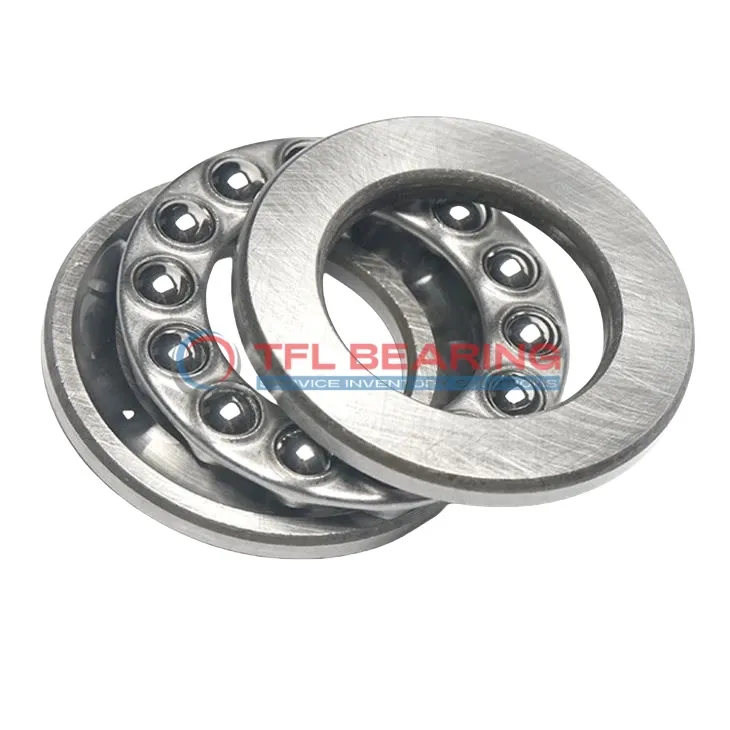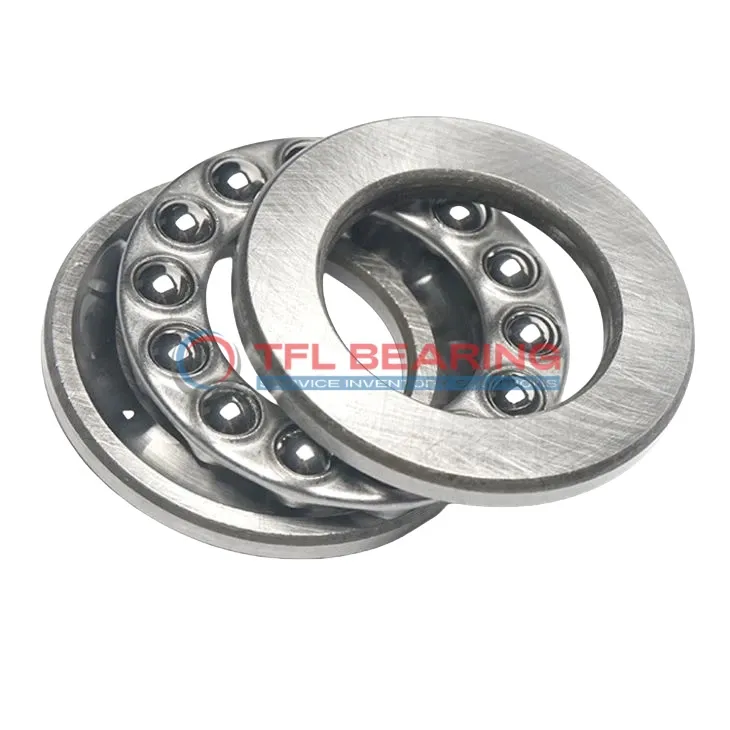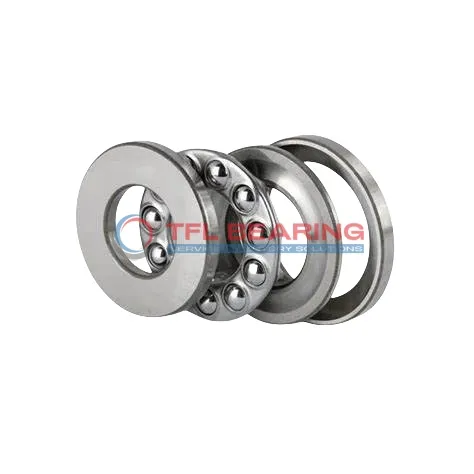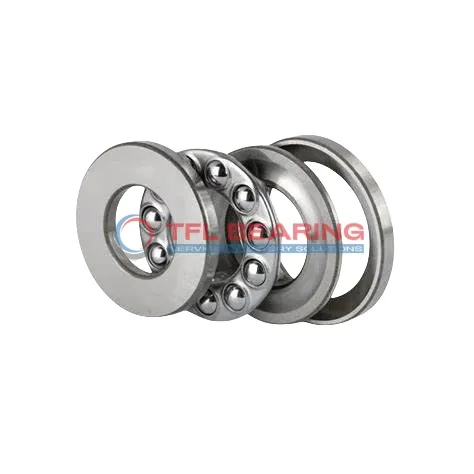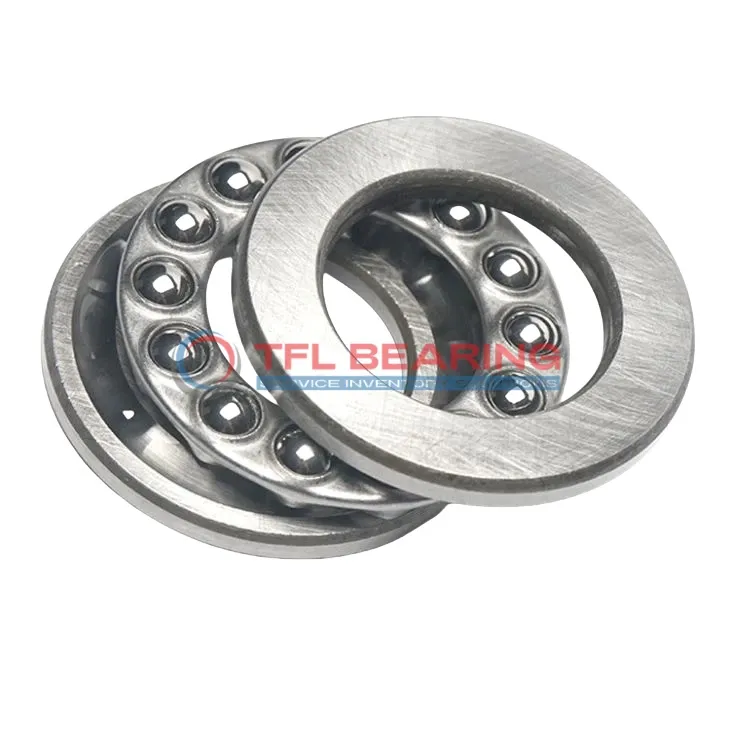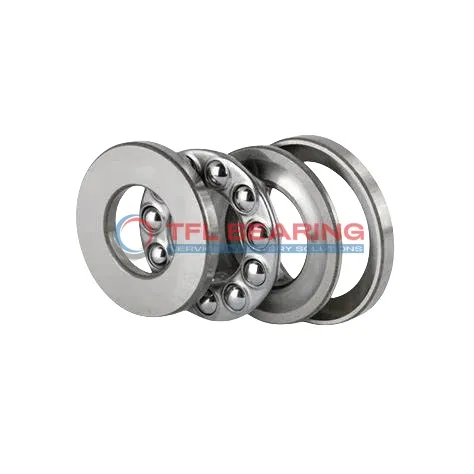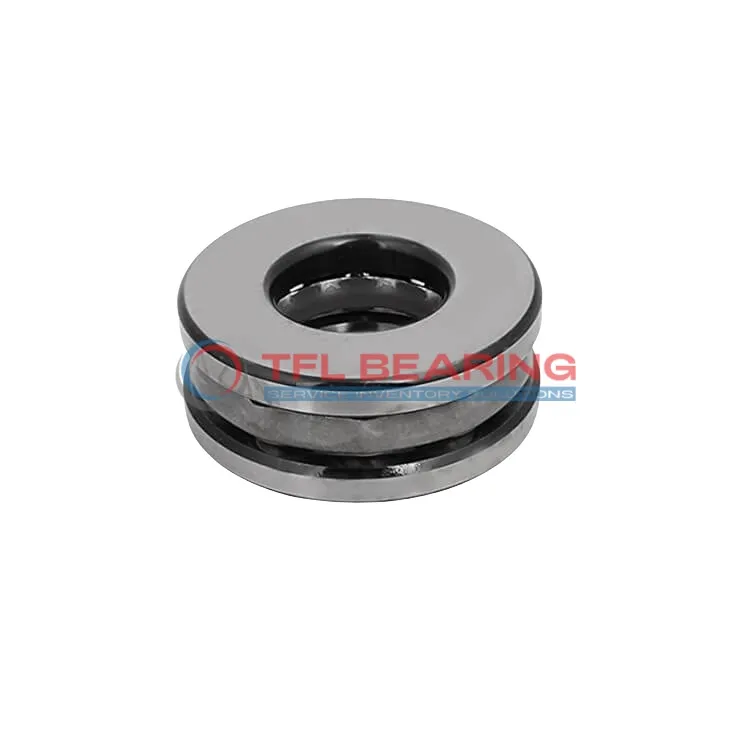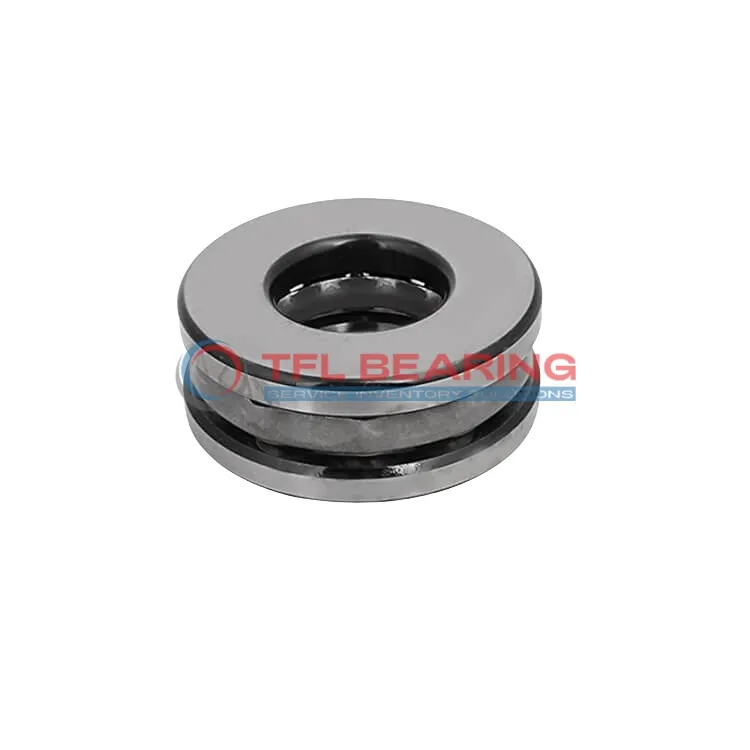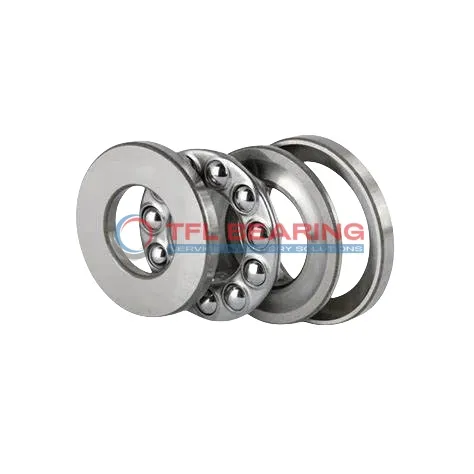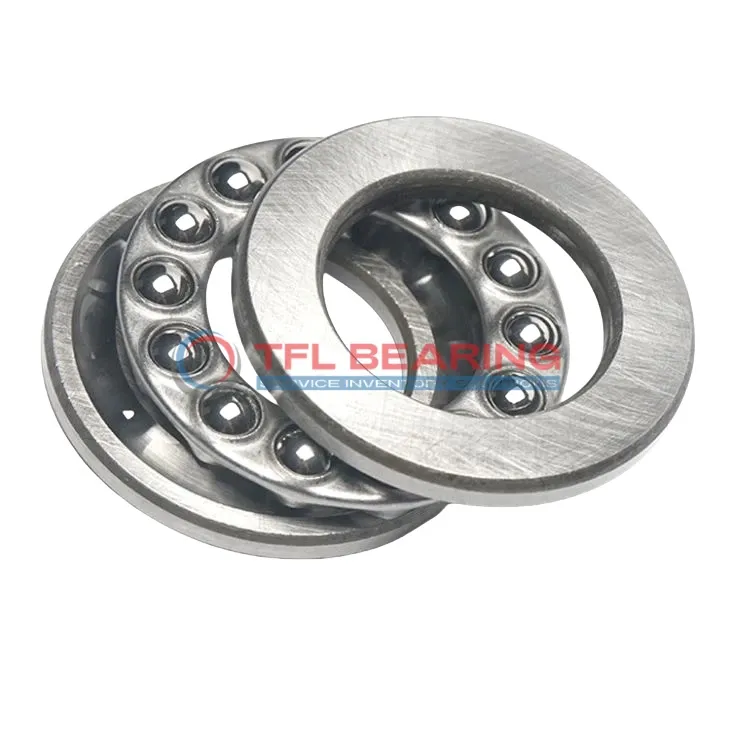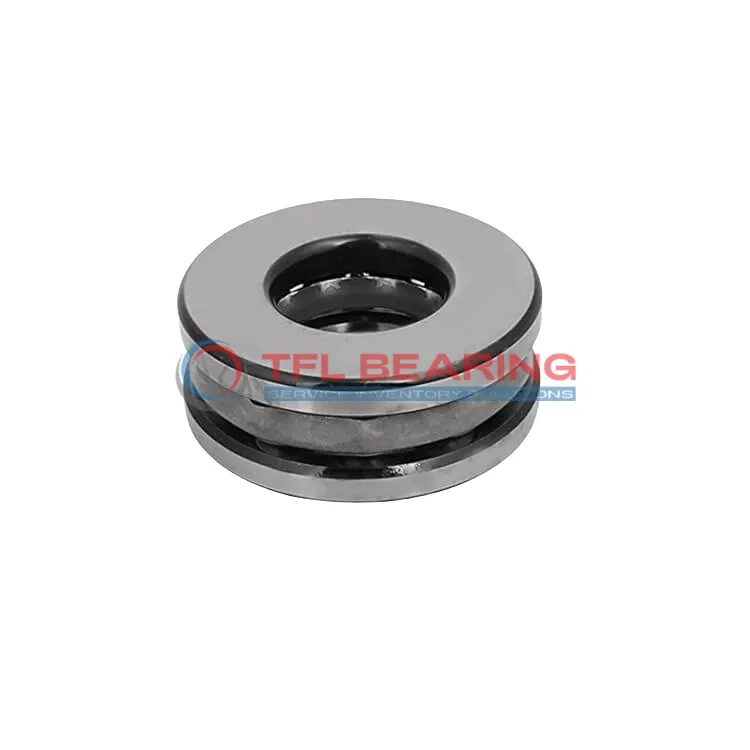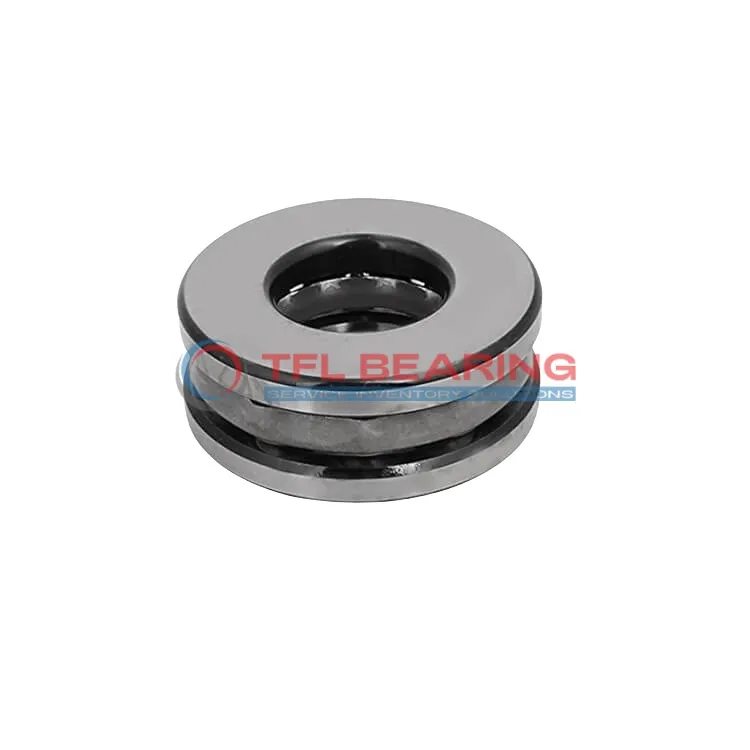Home / Product / Ball Bearings / Thrust Ball Bearings / Thrust Ball Bearing With W/ Self Aligning
Thrust Ball Bearing With W/ Self Aligning

Thrust ball bearings with self-aligning capabilities are designed to accommodate misalignment between the shaft and housing. These bearings are ideal for applications where shaft deflection or mounting errors may occur. Their ability to ensure smooth operation and extended service life makes them a practical solution for industries prioritizing reliability and performance.
Loading...
Total 27 Results
Part Number
Bore Dia
Outer Dia
Washer Outer Dia
Width
System of Measurement
Bearing Type
For Load Direction
Ring Material
Dynamic Thrust Load
Static Thrust Load
Weight
53309+U309
45 mm
85 mm
90 mm
30.1 mm
Metric
Ball
Thrust
52100 Chrome Steel
17108 lbf
31473 lbf
0.85 kg
53310+U310
50 mm
95 mm
100 mm
34.4 mm
Metric
Ball
Thrust
52100 Chrome Steel
19873 lbf
38892 lbf
1.20 kg
53311+U311
55 mm
105 mm
110 mm
39.3 mm
Metric
Ball
Thrust
52100 Chrome Steel
23380 lbf
46760 lbf
1.68 kg
53312+U312
60 mm
110 mm
115 mm
38.3 mm
Metric
Ball
Thrust
52100 Chrome Steel
22706 lbf
46760 lbf
1.81 kg
53313+U313
65 mm
115 mm
120 mm
39.4 mm
Metric
Ball
Thrust
52100 Chrome Steel
23830 lbf
49458 lbf
1.89 kg
53314+U314
70 mm
125 mm
130 mm
44.2 mm
Metric
Ball
Thrust
52100 Chrome Steel
30349 lbf
67443 lbf
2.51 kg
53315+U315
75 mm
135 mm
140 mm
48.1 mm
Metric
Ball
Thrust
52100 Chrome Steel
36644 lbf
80931 lbf
3.20 kg

Misalignment Tolerance Provided by Self-Aligning Capability
The washers of self-aligning thrust ball bearings feature a spherical raceway surface, with a curvature that matches the centre of the bearing. This allows the bearing to tilt slightly relative to the housing during rotation, providing a degree of freedom in alignment.
Even when there is a certain amount of shaft misalignment or installation error, the self-aligning washer compensates for the deviation and maintains proper contact between the balls and raceways.
As a result, self aligning ball bearings reduce the risk of damage caused by misalignment during installation or operation, improving both the tolerance and reliability of bearing performance.
Easier Maintenance, Longer Service Life
By minimizing the negative effects of misalignment, such as edge loading and uneven stress distribution—the self-aligning capability directly contributes to extending the potential service life of thrust ball bearings with self-alignment.
Reduced wear and smoother operation lead to greater durability and fewer replacements, offering better long-term value for your investment.


Excellent Running Stability
Benefiting from its self-aligning capabilities, even minor installation errors or misalignments caused by rotation during operation, can be effectively compensated by self-aligning thrust bearings, ensuring the equipment continues to run smoothly without disruption.
In addition, most self-aligning thrust bearings use high-quality steel balls. These balls are precisely machined, allowing for smooth motion along the raceways during operation, which contributes to stable and seamless equipment performance.
FREQUENTLY ASKED QUESTIONS

How much misalignment can self aligning thrust ball bearings typically handle?
They are designed to accommodate initial static misalignment, with a typical self-aligning angle of around 2°, and some designs allowing up to 3°–4°. The exact misalignment tolerance depends on the specific model and thrust bearing dimensions.
What materials are available for thrust ball bearing with self aligning?
Most thrust ball bearings with self aligning are made of chrome steel.
Known for its high hardness, excellent wear resistance, and good fatigue strength, chrome steel offers a well-balanced combination of performance, manufacturing maturity, and cost-effectiveness, making it one of the most widely used bearing materials in general machinery applications.
Do thrust ball bearings with self aligning require special bearing housing designs?
In most cases, a special bearing housing design is required. While self-aligning thrust bearings relax the perpendicularity requirements, the bearing seat surface that contacts the spherical thrust washer should have the appropriate shape (typically flat, but it should be verified against the manufacturer's specifications) and provide solid support.
Do your bearings meet international quality standards?
Yes, we are an ISO-certified bearing manufacturer, and all our bearings strictly comply with international quality standards.
OUR PROCESS

Contact
Initial Contact
01

Budgeting
Specialists Review
Needs
02

Options
Our Engineers Help YouChoose The RightBearings
03

Plant Visit
Option To Visit OurManufacturing Plant
04

Delivery
Your entire order is
delivered.
05

Support
We provide ongoingproduct support
06
HOT PRODUCTS
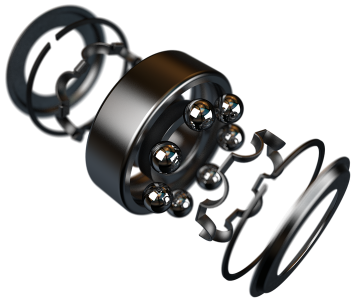
CAN’T FIND WHAT YOU NEED?
Please provide your question.
We’ll find you with the best support options.
